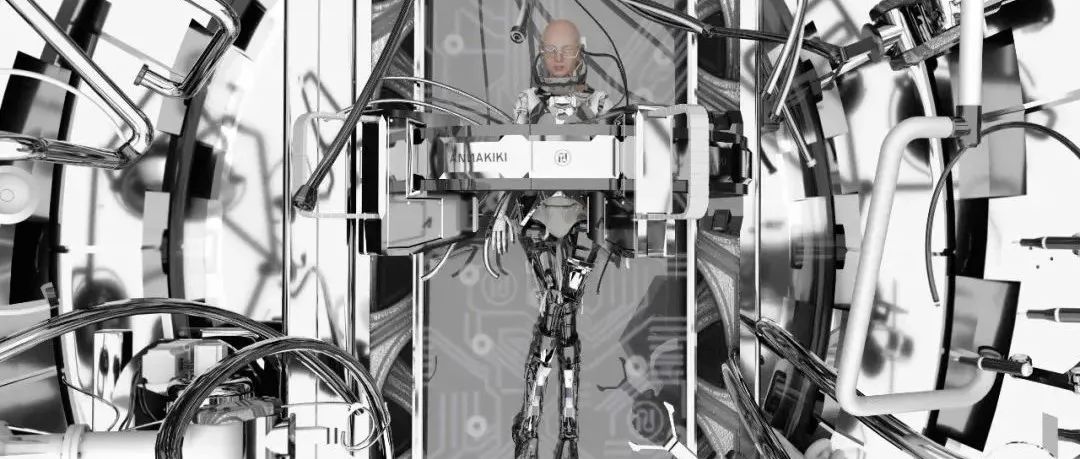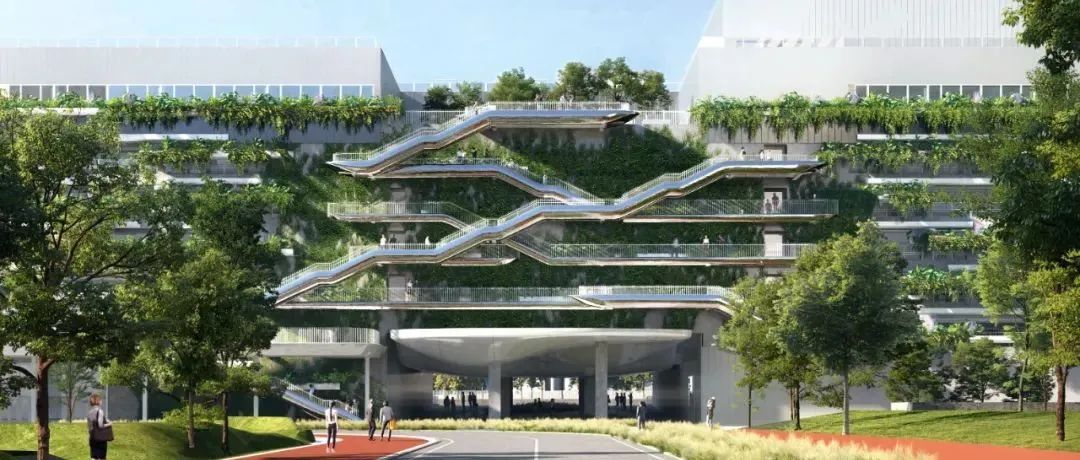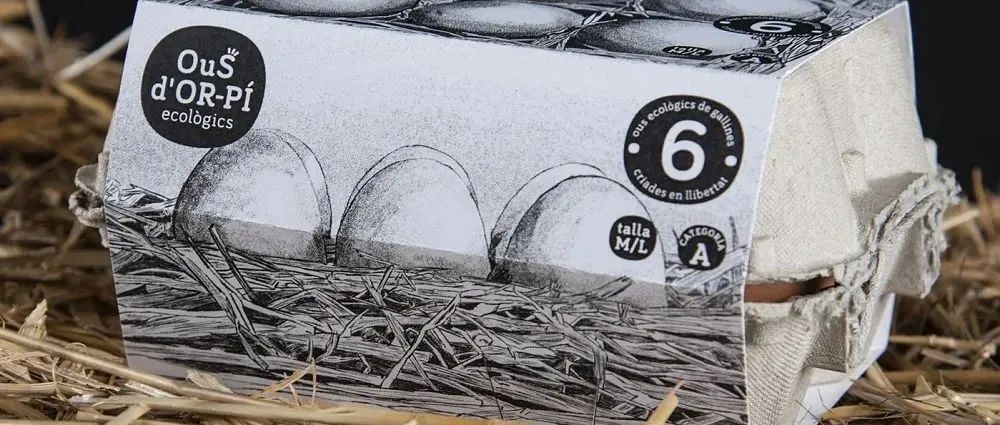HOK的研究为实验室提供技术指导,帮助减少运行碳和隐含碳,以实现净零能耗目标。
建筑占全球能源消耗的35-40%,其中很少有建筑类型能像科学实验室那样消耗能源。为了帮助业主和开发商减少碳足迹,HOK的科研团队进行了广泛的分析,研究了实验室建筑如何能够显著降低其碳依赖性,并通过在建筑或场地添加可再生能源和进行碳抵消,实现净零能耗。
挑战
实验室的碳排放强度给设计师们带来了一个独特的挑战,并且这一挑战越来越迫切需要解决。与大多数建筑类型相比,这些高度复杂的设施需要更强大的通风系统,并且包含需要24小时运行的高能耗设备。实验室还需要坚固的结构系统来限制建筑物的振动和承受沉重的外加荷载。结构系统通常由混凝土和钢组成,含有大量的隐含碳,即在基础材料提取、制造和运输建筑材料时产生的使地球变暖的排放。这是因为实验室的建设和运行需要比大多数其他建筑类型更多的不可再生能源。
实验室建筑能耗基准
性能表现不佳:典型的实验室建筑的运行需要589 kWh/m2/y的能源(S-Labs基准),包含1400 kgCO2e/m2的隐含碳(RIBA 2030挑战计划中的非国内基准)。这两个性能指标均显示实验室建筑与广泛接受的可持续性目标不符。
现在,S-Labs的现代研究实验室基准运行能耗强度(EUI)为每年每平方米589千瓦时(kWh/m2/y)。相比之下,商业办公楼的年度基准能源使用量为130 kWh/m2/y,而住宅建筑的基准能源使用量为120 kWh/m2/y。说到隐含碳,实验室建筑的含碳量是其他建筑类型的两倍,而且这种情况并不罕见。
目标
鉴于气候变化的迫在眉睫的威胁,实验室是否能够改变其建设与运营方式,以显著降低对环境的危害?特别是,根据英国皇家建筑师学会(RIBA)和美国建筑师学会(AIA)的设计挑战,实验室建筑能否在2030年实现净零? 这些是HOK分析的关键问题。
2030实验室建筑能耗
降低:为满足RIBA 2030挑战的指导原则,实验室建筑需要将其运行能耗降低75%(至147 kWh/m2/y),并将隐含碳降低50%(至700 kgCO2e/m2)。
以RIBA 2030挑战为目标,HOK研究了实验室建筑如何将其运行能耗降低75%,即从589 kWh降至147 kWh/m2/y,并将隐含碳从1400 kgCO2e/m2降至700 kgCO2e/m2或更低,相当于降低50%。
分析和结果
运行能源分析
净零实验室案例研究 – 建筑布局
上图:典型的线形建筑的实验室平面
下图:塔楼建筑的实验室平面
Top: The floorplate for a typical linear-style lab building.
Bottom: The floorplate for a lab in a tower-type building.
研究方法
在文中,HOK分析了两种不同的实验室建筑形式——一种为类似于在市中心的紧凑型垂直实验室,另外一种是更为典型的坐落于郊区环境的低层线形实验室。对这些实验室类型进行建模,以评估它们在以下三种设计性能方法下的表现:
-
基础模拟实验:该方法采用了比当前建筑法规更高的性能规范,同时使用了仍具有商业竞争力的产品,例如高性能双层玻璃。该方法是以平均换气率为每小时6次(ACH)的假设为基础。
-
中级模拟实验:该方法在基础模拟实验的基础上将性能规范提高到下一个商用水平,例如使用填充氪气的高性能双层玻璃。这种方法假设换气率为5 ACH 。
-
2030净零模拟实验:该方法使用强化性能规范来实现净零认证。例如,在中级模拟实验使用的是氪气填充的双层玻璃,而2030净零模拟实验将使用三层玻璃。这种方法下的换气率将保持在4 ACH。
减少运行碳
研究团队使用了先进的设计和环境建模工具,包括Grasshopper, Energy+, Ladybug, Honeybee与Octopus,测试了一系列低碳战略并确定最佳组合,以实现RIBA气候挑战计划中的对照相关基准将运行能源量减少75%、隐含碳排放量减少50%的目标。
有点出乎意料的是在运行能源方面,模型显示线形和垂直实验室类型在数据上几乎没有差异(垂直实验室的表现比线性实验室好1%)。这两种实验室类型之间的共性主要是由于通风,不管实验室建筑的高度或体量如何,通风是能耗的主要驱动因素。鉴于垂直和线形实验室的相似性,我们在下面给出了线形实验室的一组结果。
结果
我们的研究结果显示,2030年净零能耗实践通过提高气密性、隔热性、玻璃性能、遮阳,以及最重要的使平均换气次数降低到每小时4次的措施,将能耗降低了60%。对2030净零碳标准的调整可以在进行现场可再生能源和碳抵消之前将使电网能耗降低到235 kWh/m2/y的目标。
能源建模假设通过可再生能源(如光伏发电和地源热泵)提供现场能源,这将使电网需求减少15%至147 kWh/m2/y。另外25%的能源减少必须来自认证的抵消计划——这是电网本身脱碳之前的一项必要要求。
讨论
本研究不包括器械设备、小功率和特殊实验室流程的不受监管的能源使用。我们根据英国一家低能耗实验室的实际能耗值,将90kWh/m2作为代表值。
下一阶段将研究实现75%减排目标所需的可再生能源组合。使用当前的技术,将运行能耗降低75%需要一座配有地源热泵和大量太阳能光伏的全电力建筑。这在屋顶面积大的低层建筑中可能是可行的,但在密集城市位置的高层建筑中则是一个挑战,这可能需要进行碳抵消。
隐含碳分析
结合我们的节能研究,HOK测试了三种建设方法,以确定哪种方法提供了最低的(施工)隐含碳。
研究方法
研究的三个施工方案都包括减少隐含碳的措施,从当前的基准标准开始,逐步发展到2030净零碳的更严格措施。
-
基础模拟实验:该设计将采用钢和低碳混凝土的预制混凝土结构系统。立面将使用PPC铝板系统,带有复合木材和铝框窗。内部将包括较少的吊顶、有限的架空地板、找平层和树脂地板、铝框玻璃隔断,以及低或无挥发的涂层。
-
中级模拟实验:这种设计方法将采用低碳混凝土结构系统,并使用带有PPC铝合金窗的预制混凝土单元式幕墙系统。内部包括吊顶、架空地板、铝框玻璃隔墙和符合行业标准的油漆和涂料。
-
2030净零模拟实验:该设计将使用水泥砂浆保护的木结构系统、木材外围护系统和全木框窗。内部将没有吊顶或架空地板(水泥压光地面饰面)。
结果
为每个模拟实验创建了详细的产品规格明细,并导入到开源的一键式生命周期评估(LCA: Life Cycle Assessment)工具中。结果已被细分至各关键施工系统,概述如下。
隐含谈分析
HOK的分析显示,基于木材的方法在减少隐含碳方面最为有效。
虽然这三种方法都减少了隐含碳,但2030净零碳方案的隐含碳目标最低,为547 kgCO2e/m2,符合RIBA 2030挑战计划的目标。如果我们将木材的碳封存(树木生长过程中从环境中吸收并储存的碳量)计算在内,含碳量则会进一步降至141 kgCO2e/m2左右——比基准值减少90%。
结构
-
正如预期的那样,所有方案中最大的隐含碳源自基础结构,其次是上部钢结构。
-
大木作木材2030净零方案的结构隐含碳排放量最低,为362kgCO2/m2,经过碳封存之后为-44kgCO2/m2。
立面
-
有着最高的立面碳排放量的是使用钢框架结构系统和铝板包覆层(94kgCO2/m2)的基础模拟实验。这是出乎意料的结果,因为我们设想结合了复合木材和铝合金窗系统的轻质系统将低于预制混凝土系统的中级选项。
-
由于其较大的表面积与体积比,线形实验室略差于更紧凑和垂直型实验室类型。
-
隔热预制板的铝合金幕墙立面比中级方案少三分之二,隐含碳排放量为30kgCO2/m2
-
正如预期的那样,以木材为主的围护系统和窗户对隐含碳产生了重大影响,仅为7kgCO2/m2,相比许多建筑的典型围护系统减少了93%。
-
充分了解木材的潜在火灾风险,鉴于英国格伦费尔大楼事件,将需要与建筑保险公司进行进一步的研究。
内部装饰和饰面
-
基础模拟实验中的总计隐含碳排放量最高,为134kgCO2/m2,比中级模拟实验的91kgCO2/m2高出43kgCO2/m2。这一结果主要与水泥砂浆找平层和树脂饰面(以及相关的水泥用量)越来越多地代替乙烯基饰面材料和架空地板的使用有关。
-
净零2030方案的碳排放量最低,为78kgCO2/m2,比最高的方案低42%。大幅减少的主要原因是使用抛光水磨石/水泥砂浆地板饰面,没有架空地板,有限的吊顶,主要使用木材装修产品,以及使用有机涂料和饰面。
机械、电气和给排水(机电系统)
机电系统的隐含碳研究仍处于起步阶段,因此机电系统不是本研究的主要部分。关于这一主题有一些早期研究,CIBSE已经创建了一份新的文件 - 技术备忘录65,以定义测量机电系统含碳量的方法。
我们使用了Elementa Consulting的一项研究。该研究表明,商业办公室的机电系统含碳量可能为63kgCO2/m2(最佳情况)到105kgCO2/m2(中等情况)。由于实验室建筑在研究过程中通常采用复杂的机电系统,因此我们在上述所有场景中使用了105kgCO2/m2的中级基准。需要在下一阶段的研究中开展进一步工作,为实验室建筑的机电系统含碳量建立基准。
讨论
在所有模拟实验中,我们的结构工程研究合作伙伴AKTII确保我们分析中使用的结构规范达到了实验室使用的RF 1振动标准,结构间隔尺寸为6.6m × 9.6m。所有方案均采用相同的基础结构方案,即使用含有50%矿渣粉的大骨料混凝土垫。然而,正如隐含碳分析的结果所表明的,基础结构与建筑体量有关,例如不需要坚固基础结构的较轻建筑将包含较少的隐含碳。
结论 + 讨论
HOK的初步分析表明,尽管不容易,但按照RIBA和AIA 2030挑战计划中的可持续设计目标建造和运行实验室是可能的。本文中研究的方法可以显著降低实验室建筑的全寿命周期碳排放(建筑运行碳 + 含隐含碳建筑寿命)。
商业实验室全寿命周期碳排放
通过减少隐含碳,除了运行中产生的碳排放,实验室建筑将不再产生更多的碳足迹。上图显示了10,000平方米建筑在30年生命周期内的碳排放量。
总体而言,HOK的模型显示垂直和线性实验室建筑在实现净零方面几乎没有差异。线性实验室确实有一个明显的优势:它们宽敞的屋顶可以容纳更多的太阳能电池板阵列。值得注意的是,我们的分析检查了新的实验室建筑,但最可持续的选择是重新利用和改造现有建筑。这种“改造优先”的原则将在不使用有限的全球木材供应的情况下,节省500 kgCO2e/m2的隐含碳。这或许是我们实现净零碳的最佳途径。
HOK正在研究实验室如何在每小时允许4次以上换气的情况下实现有针对性的运行碳排放目标。HOK正在进行的其他研究包括分析实验室MEP系统的具体碳排放、可再生能源可行性研究,以及与维持现状运行相比的净零成本和节约费用。
Pathway to Net Zero Carbon Labs
– Technical Report
HOK research provides lab owners and developers technical guidance for reducing operational and embodied carbon to meet net zero goals.
Buildings account for 35-40% of global energy consumption, and few building types consume as much energy as scientific labs. To help lab owners and developers reduce their carbon footprint, HOK’s Science + Technology team conducted extensive analysis examining how lab buildings can significantly reduce their carbon dependency and, with the addition of on-site renewables and offsetting, achieve net zero.
The Challenge
The carbon intensity of labs has presented designers with a unique challenge that has increasing urgency to overcome. These highly complex facilities demand far greater ventilation than most building types and are home to energy-intensive equipment that is often in operation 24 hours a day. Labs also need robust structural systems to limit building vibration and support heavy imposed loads. Structural systems, typically comprised of concrete and steel, contain high quantities of embodied carbon, i.e. the global warming emissions expended in the base extraction, manufacturing and transportation of building materials. The cause of this is that labs require far more non- renewable energy to build and operate than most other building types.
Lab Building Energy Consumption Benchmark
Poor performers: The typical lab building requires 589 kWh/m2/y of energy to operate (S-Labs Benchmark) and contains 1400 kgCO2e/m2 of embodied carbon (RIBA 2030 Challenge Non-Domestic Benchmark). Both performance measures place lab buildings at odds with widely accepted sustainability goals.
Today, the S-Labs benchmark operational energy use intensity (EUI) for a modern research lab stands at 589 kilowatt hours per square metre annually (kWh/m2/y). By comparison, the annual benchmark energy use for a commercial office building stands at 130 kWh/m2/y, and the benchmark for residential buildings is 120 kWh/m2/y. When it comes to embodied carbon, it’s not uncommon for lab buildings to contain twice the construction carbon of other building types.
The Goal
Given the imminent threat of climate change, can labs be built and operated in a manner that is significantly less harmful to the environment? Particularly, can lab buildings achieve net zero status by 2030 as set out by the design challenges of both the Royal Institute of British Architects (RIBA) and the American Institute of Architects (AIA)? Those are the key questions of HOK’s analysis.
Lab Building Energy Consumption 2030
Dial it down: To meet the guidelines of the RIBA 2030 Challenge, lab buildings would need to reduce their operational consumption by 75% (to 147 kWh/m2/y) and embodied carbon by 50% (to 700 kgCO2e/m2).
Using the RIBA 2030 Challenge as a target, HOK explored how lab buildings could reduce their operational energy use by 75% from 589 kWh to 147 kWh/m2/y and embodied carbon 50% from 1400 kgCO2e/ m2 to 700 kgCO2e/m2 or lower.
Analysis and Results
Operational Energy Analysis
Methodology
For this paper, HOK analyzed two different lab building forms – a compact and vertical lab akin to those found in city centres and a linear lab more typical of suburban settings. These lab types were modelled to assess how they perform under the following three design performance approaches:
-
Baseline Practice: This approach incorporates performance specifications greater than current building regulations while using products that are still commercially competitive, for example high performance double glazing. This approach also assumes an average ventilation rate of 6 air changes per hour (ACH).
-
Intermediate Practice: This approach improves upon the Baseline practice by increasing performance specification to the next commercially available level, for example using high performance double glazing with a krypton filled cavity. This approach assumes a ventilation rate of 5 ACH.
-
2030 Net Zero Practice:This approach uses back-stop performance specification to achieve net-zero certification. For example, where the intermediate approach would use double glazing with krypton cavities, 2030 Net Zero would use triple glazing. Ventilation rates under this approach would be kept to 4 ACH.
Operational Carbon Reductions
The research team used advanced design and environmental modelling tools, including Grasshopper, Energy+, Ladybug, Honeybee and Octopus to test bundles of low carbon strategies and determine the optimum combination to achieve the RIBA Climate Challenge 75% reduction in operational energy and 50% reduction embodied carbon emissions against relevant benchmarks.
Somewhat surprisingly, the modelling revealed statistically little difference between the linear and vertical lab types when it came to operational energy. (The vertical lab performed 1% better than the linear lab.) This commonality between the two lab types is largely due to ventilation, which is the main driver of energy loss for lab buildings regardless of their height or massing. Given the similarity of vertical and linear labs, we have presented one set of results below for a linear lab.
Results
Our findings revealed the 2030 Net Zero practice reduced energy consumption the most — by 60% through a combination of improvements to air tightness, insulation, glazing performance, shading and, most importantly, lowering the number of average air changes to 4 per hour. These adjustments to the 2030 Net Zero specification would bring energy consumption from the grid down to the targeted goal of 235 kWh/m2/y before on-site renewables and offsetting.
The energy modelling undertaken assumed an on-site energy provision through renewables, such as photovoltaics and ground source heat pumps (GSHP), that would reduce grid demand by 15% to 147 kWh/m2/y. An additional 25% reduction in energy would have to come from certified offsetting programmes — a necessary requirement until the energy grid itself is decarbonised.
Discussion
Unregulated energy use of equipment, small power, and special lab processes were not included in this study. Instead, we used 90kWh/m2 as a representative value based on the actual energy performance of a low-energy laboratory in England.
The next stage in our research will be to investigate what combination of renewables would be required to achieve our 75% reduction target. Using current technologies, a 75% reduction in operational energy would require a fully electric building with ground source heat pumps and a significant amount of solar PV. This might be possible in low rise buildings with large roof areas but would be challenging in tall buildings in dense urban locations, which would likely require offsetting.
Embodied Carbon Analysis
In conjunction with our energy reduction studies, HOK examined three construction approaches to determine which offered the lowest embodied (construction) carbon.
Methodology
All three construction options studied include measures for reducing embodied carbon, beginning with the current Baseline standard and progressing to the more rigorous measures of the 2030 Net Zero.
-
Baseline Practice: This design would feature a steel and pre-cast concrete structural system with low carbon concrete. The façade for this approach would use a PPC aluminum panel system with composite timber and aluminum framed fenestration. The fit out would include limited suspended ceilings, limited raised floors, screed and resin flooring, aluminum glazed partitions and paintings and coating with low or no off-gassing.
-
Intermediate Practice: This design approach would incorporate a low carbon concrete structural system and use a pre-cast concrete unitized façade system with PPC aluminum fenestration. Fit out would include suspended ceilings, raised floors, aluminum glazed partitions and industry standard paints and coatings.
-
2030 Net Zero Practice: This design would use a mass timber structural system with screed topping, a timber cladding system and full timber framed fenestration. Fit out would have no suspended ceilings or raised floors (the screed floor will be exposed with a polished finish).
Results
A detailed product specification was created for each option and imported into the open source One-Click LCA tool. The results have been broken into key construction systems and are outlined below.
Embodied Carbon Analysis
HOK’s analysis indicates that the timber-based approach was most effective at reducing embodied carbon.
While all three approaches reduced embodied carbon, the 2030 Net Zero option had the lowest embodied carbon at 547 kgCO2e/m2, falling within RIBA’s 2030 Challenge target. If we included the carbon sequestration of the timber (the amount of carbon absorbed from the environment and stored during the growing of the trees) the embodied carbon would drop even further to around 141 kgCO2e/m2 — a 90% reduction from the benchmark.
Structure
-
As expected, the largest embodied carbon for all options is linked to sub-structure, followed by the steel super structure.
-
The mass timber 2030 Net Zero option had the lowest embodied carbon structural emissions of 362kgCO2/m2 before sequestration and -44kgCO2/m2 including biogenic sequestration.
Façade
-
The highest façade emissions were related to the Baseline option which used an SFS system and aluminium cladding (94kgCO2/m2). This was surprising since we had assumed the lightweight systems combined with a composite timber and aluminium window system would be lower than the precast Intermediate option.
-
Due to its larger surface area to volume ratio, the linear lab type was marginally worse than the more compact and vertical form.
-
The insulated pre-cast panel façade with aluminium curtain walling was two-thirds less than the Intermediate option with an embodied carbon emission of 30kgCO2/m2.
-
The predominately timber cladding system and windows, as expected, had a significant impact on the embodied carbon with just 7kgCO2/m2 or a 93% reduction from the typical cladding specification of many buildings.
-
The fire implications of timber are fully appreciated and requires further investigation with building insurance companies in the light of Grenfell tragedy in the UK.
Internal Fit-out and Finishes
-
The Baseline option had the highest combined embodied carbon emissions of 134kgCO2/m2 which was 43kgCO2/m2 higher than the Intermediate option of 91kgCO2/m2. This result is primarily linked to the increased use of levelling screed and resin finish (and associated cement usage) in lieu of using a raised floor system with vinyl finish.
-
The Net Zero 2030 option had the lowest carbon emissions of 78kgCO2/m2 which was 42% less than the highest option. The key reasons for this significant decrease was the use of a polished terrazzo/screed floor finish throughout with no raised floors, limited suspended ceilings, predominately timber fitout products, and the use of organic paints and finishes.
Mechanical, Electrical and Plumbing (MEP)
The embodied carbon research of MEP systems is still in its infancy, and therefore MEP was not a direct part of this study. There are some early studies on this subject, and CIBSE has created a new Technical Memorandum 65 to define a methodology to measure MEP embodied carbon.
We have used a study by Elementa Consulting that suggests the embodied carbon of MEP for commercial offices could be 63kgCO2/m2 (best case) to 105kgCO2/m2 (medium case). Laboratory buildings typically employ complex MEP systems due to the research process, and therefore we have used the medium case benchmark of 105kgCO2/m2 for all the scenarios above. Further work in the next stage of the research is required to establish benchmarks for MEP embodied carbon of lab buildings.
Discussion
In all the options, our structural engineering research partner, AKTII, ensured that the structural specifications used in our analysis achieved a vibration criterion of RF 1 for lab use with a structural bay size of 6.6m by 9.6m. The same sub-structure strategy of mass concrete pads using 50% GGBS was used for all options. However, as is evident in the results of the embodied carbon analysis, sub-structure is linked to building mass i.e. lighter buildings that don’t require robust sub-structures would incorporate less embodied carbon.
Conclusion + Considerations
HOK’s initial analysis indicates that, while not easy, it is possible to build and operate labs in accordance with the sustainable design goals of the RIBA and AIA 2030 challenges. Altogether, the approaches studied in this analysis can significantly reduce the whole life carbon (operational carbon + embodied carbon building lifespan) of a lab building.
Commercial Lab Whole Life Carbon Results
By reducing embodied carbon, labs can ‘flip the script’ wherein the building of the lab would no longer create a greater carbon footprint than its year-to-year operation. The charts above show whole-life carbon over a 30-year time span on a 10,000m2 building.
In general, while HOK’s studies showed little difference between vertical and linear lab buildings in achieving net zero, linear labs do hold one distinct advantage: their expansive roofs allow for more solar panel arrays. It is important to note that our analysis examined new lab buildings, but the most sustainable option is to reuse and adapt existing buildings. This ‘retrofit first’ principle will save over 500 kgCO2e/m2 of embodied carbon without the use of limited global timber supply. It is perhaps our best way to achieve net zero carbon for our sector.
HOK is now studying how labs can achieve targeted operational carbon goals while allowing for more than 4 air changes per hour. Additional HOK research underway includes an analysis of the embodied carbon of lab MEP systems, a renewables feasibility study, and net zero costs and savings compared with business as usual.
本文来自微信公众号“HOK贺克”(ID:hok_ap)。大作社经授权转载,该文观点仅代表作者本人,大作社平台仅提供信息存储空间服务。












